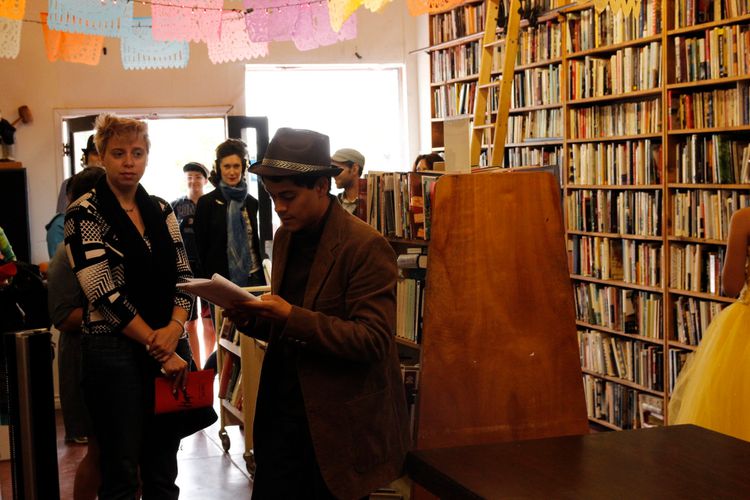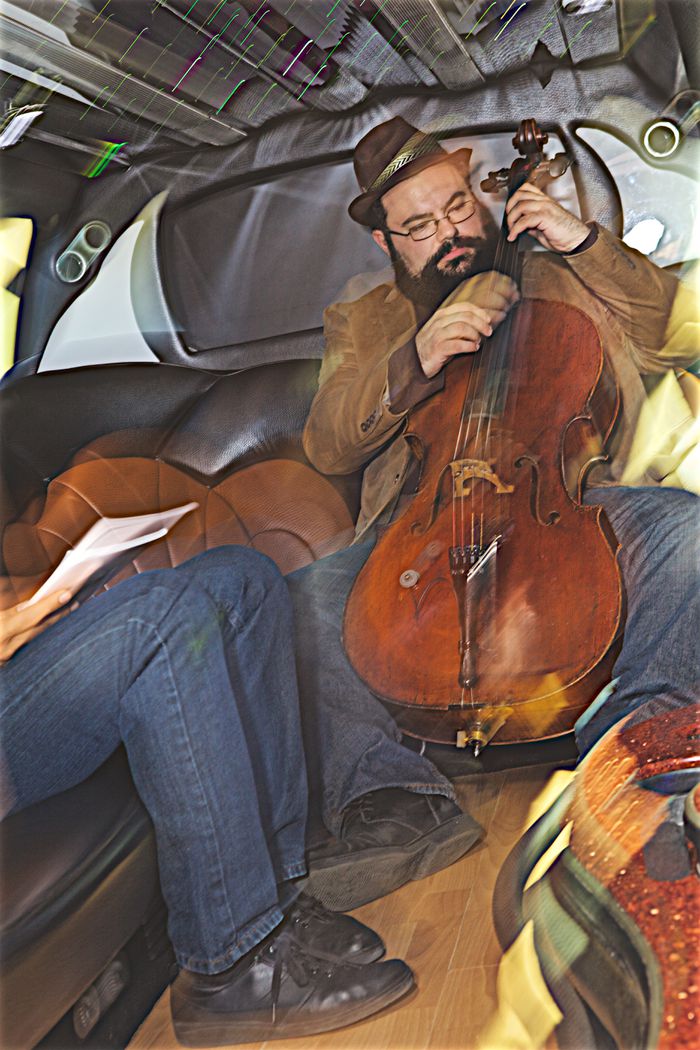-
Chapter 2 CrashRed Route - An intersection in Boyle Heights
Lucha and Jamson exchange information in the aftermath of their accident.
-
Chapter 4 Lucha's Quinceañera SongRed Route - Mariachi Plaza, Boyle Heights
Lucha remembers the day she left her childhood behind.
-
Chapter 6 Jameson PortraitYellow Route - The 2nd Street Tunnel, Downtown Los Angeles
Jameson contemplates the multifaceted nature of his personality.
-
Chapter 7 The ReunionYellow Route - A Rehearsal Studio in the Arts District
Lucha and Jameson connect at Lucha's performance of Orpheus and Eurydice.
-
Chapter 8 First KissRed Route - Hollenbeck Park, East Los Angeles
Romance blooms on Lucha and Jameson's first date.
-
Chapter 9 Angel's PointGreen Route - Angel's Point, Elysian Park
Lucha and Jameson share a passionate physical experience.
-
Chapter 11 The Floating NebulaGreen Route - The Corn Fields, Los Angeles State Historic Park, Chinatown
The metaphysical peak in Lucha and Jameson's love.
-
Chapter 12 WeddingYellow Route - City Hall, Downtown Los Angeles
On their wedding day, Lucha gives Jameson a fateful gift.
-
Chapter 14 The Phone Call, Part 1Red Route - Traversing between the Arts District and Boyle Heights
Lucha receives a mysterious phone call from a voice she seems to recognize.
-
Chapter 17 Orlando's FairwellRed Route - Evergreen Cemetery
Before leaving Los Angeles, Orlando pays his last respects to his wife.
-
Chapter 18 Interlude (Car Wash)Green Route - AirStream Trailer, Elysian Park
Reflect on the impact of a location's geography on a person's psyche.
-
Chapter 24 The Red NotebookRed Route - Utter darkness
In a state of darkness, Lucha is haunted by Jameson's red notebook.
-
Chapter 25 The Other WomanYellow Route - The Bradbury Building, Downtown Los Angeles
Still submerged in darkness, Lucha dreams of Jameson's infidelity.
-
Chapter 26 HadesGreen Route - Bowtie Parcel, Los Angeles River
Lucha descends to the underworld in search of Jameson.
-
Chapter 28 Lucha and Orlando in LoveYellow Route - Historic Core, Downtown Los Angeles
After years apart, Lucha and Orlando reunite in Los Angeles.
-
Chapter 33 Farewell From the Roof TopsRed Route - Rooftops, Toy Factory Lofts, Biscuit Lofts, Ito Building Tower, Arts District
Lucha makes peace with Jameson's disappearance.

Orlando Portrait
Cello: Betsy Rettig/Derek Stein
Special Thanks to Colleen Jurretche and David Kipen at Libros Schmibros
Music by Andrew Norman
Text by Jose Ortega y Gasset, Meditations on Quixote, and Yuval Sharon
Director’s Notes:
“We see young Orlando take a book off the shelf of Libros Schmibros book store in Boyle Heights. He reads the book in Spanish – Jose Ortega y Gasset’s Meditations on Quixote – as he walks down 1st Street.
“Without looking up he finds his way in a car, where another version of him is playing on the cello. We then hear the voice of a third Orlando through the car speakers, from the stand-point of the future. He claims to barely recognize this younger version of himself, but he remembers the moment that he felt he was addressed from a voice that spanned generations: it was like a moment of calling.


“I think all of us who have dedicated our lives to the arts can remember similar moments, when a connection with a work of art strikes us like a thunderbolt, and a previously unknown destiny emerges as an inevitable path for our lives.
“Numbering the chapters was a back-and-forth process towards the creation of an arc that would add up if you could follow the characters chronologically.
“The older voice of Orlando speaks from a position that is closer to the Luchas of Chapter 29, Chapter 31, or Chapter 33 – and following Lucha’s reminiscence of the supernatural connection she felt to Monteverdi’s Orfeo in the previous chapter, this chapter shows Orlando experiencing the same thing with different results. But of course, and quite intentionally, no audience member could ever actually experience the piece in anything resembling a proper order. Depending on the direction the live audience travelled, the chapter that followed this one was either Chapter 4 or Chapter 17 – not Chapter 33. Like the Cortázar novel, I was hoping the audience would feel the sense of a center to the work, a place where all the various chapters connect, even if they cannot experience it. Beyond the post-modern aesthetic exploration of this sense of discontinuity, I think the existential implication of this idea was central to the concept of Hopscotch.
“I read Ortega y Gasset’s essay immediately after reading Cervantes’ original – I’m not sure I felt as thunderstruck as Orlando, but I’ve never forgotten the brilliance and clarity of his ideas, and I think many of them shaped some of the philosophical underpinnings of Hopscotch. The young Orlando reads a part I thought about a lot in the early stages of Hopscotch: ‘When shall we open our minds to the conviction that the ultimate reality of the world is neither matter nor spirit, is no definite thing, but a perspective?’ Or even more powerfully: ‘I am myself plus my circumstance, and if I do not save it, I cannot save myself.’
“Gabriel Garcia read the text as if to himself – but to make sure he didn’t have to sacrifice that illusion while on the street, we gave audiences headphones for their walk from the car to Libros Schmibros bookstore. The amazing result was not just the more intimate connection of his voice in our ears, but the sound of the streets were also amplified and alienated through the process. I loved that the ideas of the Ortega y Gasset, which ask us to consider how the circumstances of our lives shape who we are, was not only better heard through the headphones but brought to life.”
